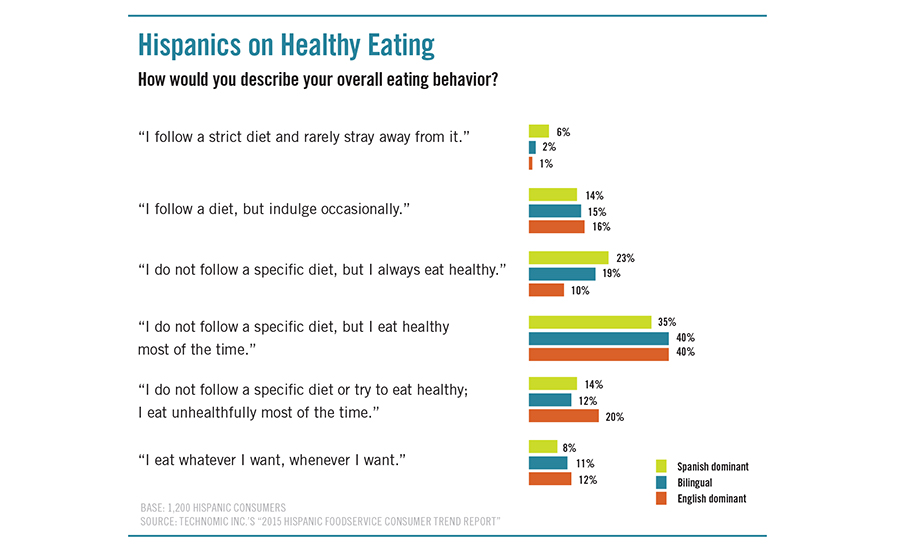Hispanics comprise approximately 17% of the US population, making them the nation’s largest minority group. That number is expected to steadily grow during the next 35 years, according to the US Census Bureau. Because this demographic keeps increasing its spending power, it is crucial to understand the need-states of Hispanic Americans during their foodservice purchasing occasions.
Technomic’s recent “Hispanic Foodservice Consumer Trend Report” found that healthy options are being increasingly sought out by Hispanic patrons when visiting restaurants. In fact, 46% of Hispanics surveyed said they are more likely to visit a restaurant if healthy options are available, which is greater than the 41% of the general U.S. population that answered the same.
Although Hispanics pay attention to healthy eating, they do not necessarily follow a diet. Only 3% of Hispanics said they follow a strict diet, while only 10% agreed that they eat what they want, whenever they want. Most Hispanic consumers fall in between these extremes by making daily health-conscious eating decisions but splurging from time to time.
Healthy Ingredients on the Rise
Since Hispanic Americans value healthy options, opportunities exist to put better-for-you spins on some traditional dishes. Looking at how healthy eating can translate to Latin fare, there are numerous occasions to substitute traditional ingredients for more nutritious options. For instance, swapping red meats for leaner proteins can help attract health-conscious Hispanic consumers. This could include replacing ground beef or steak—staple ingredients common in menu items like tacos, quesadillas and enchiladas—with poultry options, such as ground turkey or chicken. Also expanding on menus is the use of more seafood proteins in Mexican cuisine, which is largely influenced by the regional Baja-style trend originating in California.
Beyond proteins, healthy also relates to lighter condiments and sides. For instance, opting for light dressings and brown rice can provide a health-halo for popular Latin dishes. Incorporating healthy buzzwords into ingredient listings will also resonate with Hispanic consumers. This is especially true of “fresh,” “authentic” and “homemade,” which top the list of health descriptors Hispanic consumers noted they are more likely to purchase and pay more for during foodservice occasions.
Other important health descriptors on menus for Hispanic patrons, particularly Millennials, are terms relating to sourcing and quality, such as natural, seasonal, sustainable, organic and local.
Offering ethically sourced, local and natural foods can help not only reach, but also retain, Hispanic customers. Because this booming demographic wants healthy options available (even though they may not always purchase these items), promoting ingredient transparency and quality is a solid step toward catering to Hispanic Americans.
